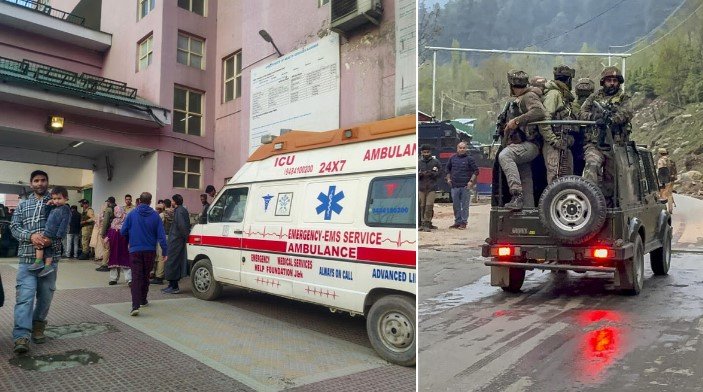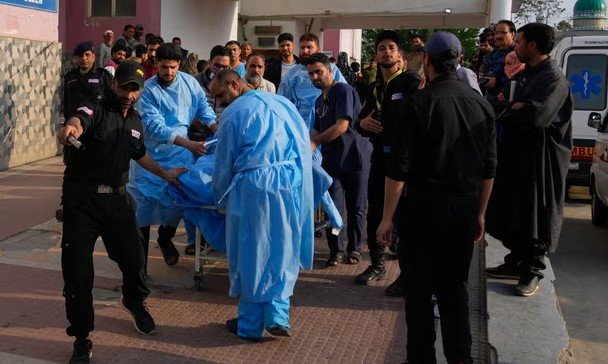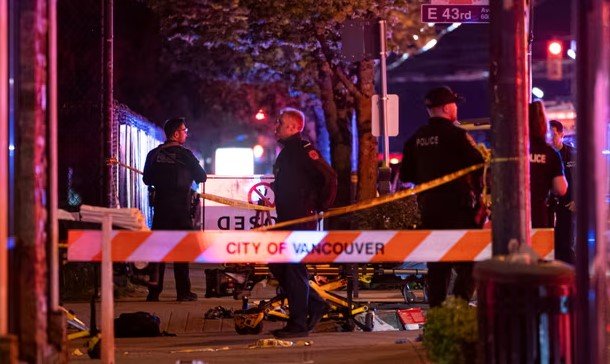The attack has sparked outrage and increased the already heavy burden of security concerns in the region.
Srinagar, India – April 22, 2025 – Reports from authorities confirm that at least 26 tourists have been killed while dozens more have been injured in a vicious attack carried out in the Indian-controlled territory of Jammu and Kashmir. The charming yet hazardous area of Pahalgam is poised as the center where suspected militants are blamed for the firing that was opened on a collection of tourist coaches and private cars.
In comparison to other forms of violence, Indian local politicians believe this is one of the most horrific cases of massacre in Kashmir in the last 10 years. The majority of the victims were Indian citizens from the states of Maharashtra, Gujarat, and Delhi who were travelling to the valley during peak tourism season.
The Attack Process
As narrated by eyewitnesses and officers of the law, the attack took place towards the end of the day at approximately 6:45 pm with the local clock’s hands set 5 minutes fast. As three buses with tourists in them set out from the well-known hill location, Aru Valley, the attack took place.
Unidentified gunmen, suspected to be well-equipped insurgents, ambushed the convoy on a winding road that connects to Lidroo village. The assailants opened fire on the vehicles in a broad-based manner, resulting in disorder and massacre. Some buses in the frenzy also took off and collided on the road. One of them caught fire.
Nineteen people at the scene reported, “We heard loud bangs and shots. People started screaming and attempting to climb out of the bus windows.” One of the individuals was from Mumbai, who was in the bus and said: “It was crazy, I witnessed people being shot, some received bullets in the forehead.”
After the militants left the site and while security forces got to respond to distress calls, they were completely defenseless. By the time backup arrived, they had outstripped the zone to the nearby woodlands.
Expenditure Report
The deceased’s demographic count is reported at 15 females, 8 males, and 3 children, as well as over 40 others who were admitted to hospitals stationed in Srinagar and Anantnag with many of whom were labeled as critical.
The terrorist attack was condemned by the Indian Prime Minister Modi in his statement, where he described it as a “cowardly and barbaric act.” Offering condolences to the families of the victims, he promised that “those responsible will not be spared.”
Modi, the Indian army, with Jammu & Kashmir Police Commandos, launched a multi-faceted search operation to bring the culprits to justice with the aid of drones, thermal imaging, sniffing dogs, and other high-tech military equipment through the dense forest.
A new picture of the already firmly enclosed Kashmir brings the fragile calm again.
Tourism, be it inter or intranational, targeting the terrorists has remained a rare occurrence in Kashmir; rather, the strip was enveloped with violence without a switch for many years. Gradually, in the years after the ban on article 370 of 2019, when the semi-autonomous status was removed, the Indian Government had begun claiming improved infrastructure with a surge in protected tourism, so had been the heal to the region’s wounds, sister, which further complemented.
The numbers speak for themselves, record incoming tourism in the year of 2023 commenced in the very first quarter of the next year of 2024. With these attacking measures of providing a serious amount of hindrance, not only security-wise but foremost in regard to perception.
Dr. Imran Rafiq, a political scientist from Kashmir’s Srinagar, noted that, “The tragedy coincides with the time when Kashmir was attempting to bounce back as a safe travel destination. The wounds will be both psychological and financial.”
Speculated Militant Participation
No group seems to have accepted the blame as yet, but preliminary intelligence suggests either LeT or one of its splinter groups operating under different aliases. These groups are known to partake in high-profile violence, especially during politically sensitive periods.
“Such attacks are meant to lower the confidence of the people, increase communal violence, and disrupt the peace processes,” remarked H. S. Dhillon (Retd), Lieutenant General and Indian Army commander veteran in the region.
Some of the informants in the Home Ministry of India suspect that the purpose of the attack could be to derail the scheduled Lok Sabha elections in the valley, which is slated to vote into motion by next month.
Universal Condemnation
Variable sources report of such grief felt the world over, with more sources reporting people flooding the streets from Delhi to as far south as Kerala, starting candlelight vigils in honor of the victims and tweeting #KashmirAttack along with #PrayForTheVictims.
Opposition leaders also joined in on the outrage. Congress Party President Mallikarjun Kharge said, “This government must answer how such a catastrophic failure of intelligence happened. These were innocent people—mothers, children—massacred on a vacation.”
All travel operations to the high-altitude zones of Kashmir are on hold until further notice by the Tourism Ministry.
Impact on the Local Communities.
Locals who operate in Pahalgam, more than anyone else, are heavily dependent on tourism. The owners of hotels, the ponywallahs, taxi drivers, and craftspeople received a huge blow in light of this news.
An area hotel manager, Abdul Rashid, gave a statement highlighting these setbacks, saying, “We were just starting to see hope again. Now, who will come here? Who will trust that they’ll be safe?”
This attack may drive a wedge between the local populace and militant groups, for many of them are circulating with less support due to their violent ways and doctrinal madness.

Kashmir is now under heightened security.
Following the attack, the Union Home Ministry has mobilized paratroopers for repositioning at strategic tourist, pilgrimage, and transport hubs. Cross-border infiltration surveillance has been enhanced for the Line of Control (LoC).
Multiple states have dispatched emergency response units to liaise with local hospitals for the collection of the victims’ bodies.
What Comes Next?
In the coming days, India’s counterterrorism agencies are said to increase the south Kashmir region. It is also forecasted that the National Investigation Agency (NIA) will send some of its higher officials into the region for a deeper investigation.
At the same time, leaders from civil societies are advocating for restraint and encouraging the general public to ignore false information as well as messages of hatred.
Jointly, not divisional mechanism is advocated by terrorism does harm to fracture people,” claimed Revati Pillai, a human rights advocate from New Delhi. “Our answer needs to be cohesive strength.”
Table of Contents
Concluding Thoughts: A Dark Day, But Hope Remains
Murdering twenty-six tourists in Kashmir is by no means only a domestic tragedy; while it is an attempt to push towards violence, there even needs to be a shadow of normalcy embedded in the valley. For victims’ kin, such an attack comes along meeting of hopeless persistence. In return for all this, Kashmir has to dip itself into an insatiable dark passage, long expected to find the light of peace.
As the investigation shifts forward and military procedures try to get tighter, there are expectations that, for once, the country needs witnesses, and a willingness to be devoid of covering inhuman cases their people are exposed to.



